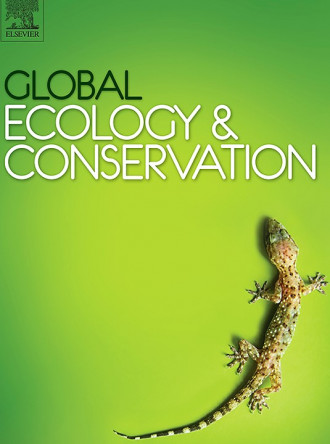The endangered red panda in Himalayas: Potential distribution and ecological habitat associates
ABSTRACT
The red panda Ailurus fulgens, an endangered herbivorous member of the order Carnivora
that is endemic to the eastern Himalayan broadleaf and coniferous forests, is surviving
under threats induced by human activity and climate change. The distribution range of the
red panda in Nepal represents an understudied remnant population at the edge of its
western biogeographic distribution range. To build a potentially suitable habitat, we used
red panda occurrence and the least correlated bioclimatic variables in MaxEnt modeling. In
addition, habitat variables were recorded in transects and quadrat plots to identify
ecologically important variables for the red panda habitat. Currently, 14.23% (21,680 km2)
of Nepal is a climatically suitable habitat for the red panda. The mean temperature of the
warmest quarter, annual temperature range, mean temperature of the coldest quarter and
precipitation of the coldest quarter are the major contributing variables in the model, with
an area under the ROC curve (AUC) of 0.94. Climatic, geographic, and habitat group variables
have considerable contributions, while disturbance has a low contribution. Multiple
factor analysis identified mixed broadleaf forest, East Himalayan oak-laurel forest, canopy
cover >20%, ground substrate use, bamboo cover >20%, tree stump presence, fallen logs of
small trees and habitat without grazing as having high contributions in the qualitative
groups. Similarly, the elevation, distance from settlements and roads, distance to water
sources, annual temperature range, mean diurnal range and annual precipitation were
important variables in the quantitative groups. The results will help guide conservation
managers in implementing effective habitat management programs for the red panda.

